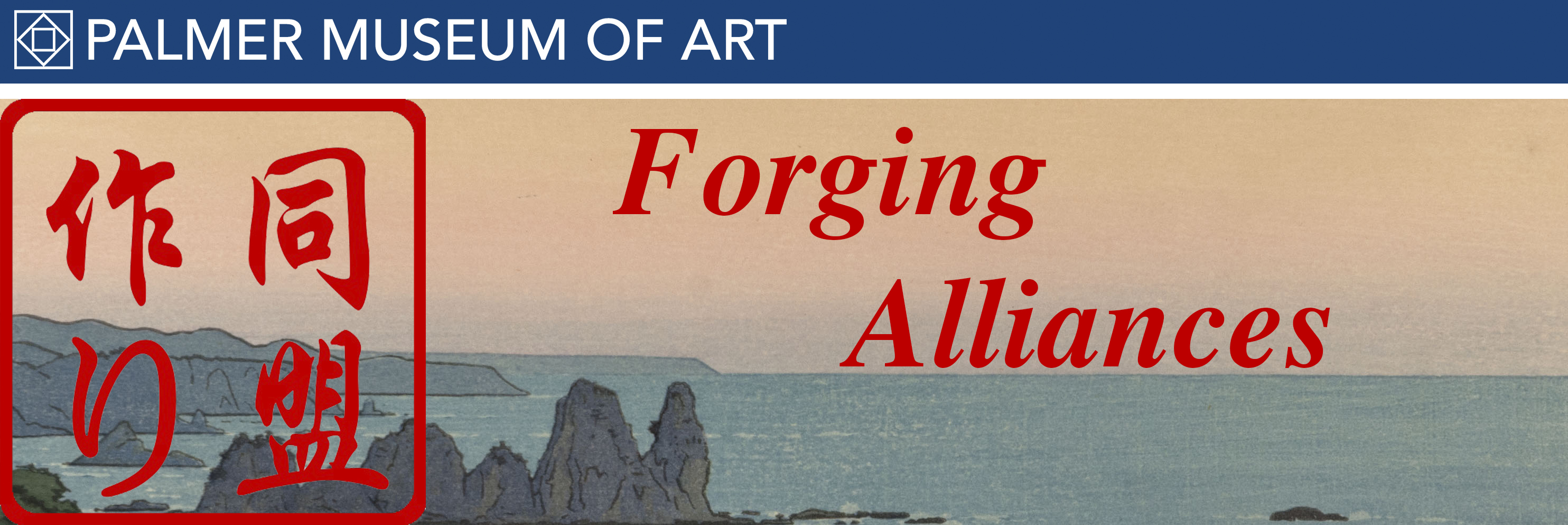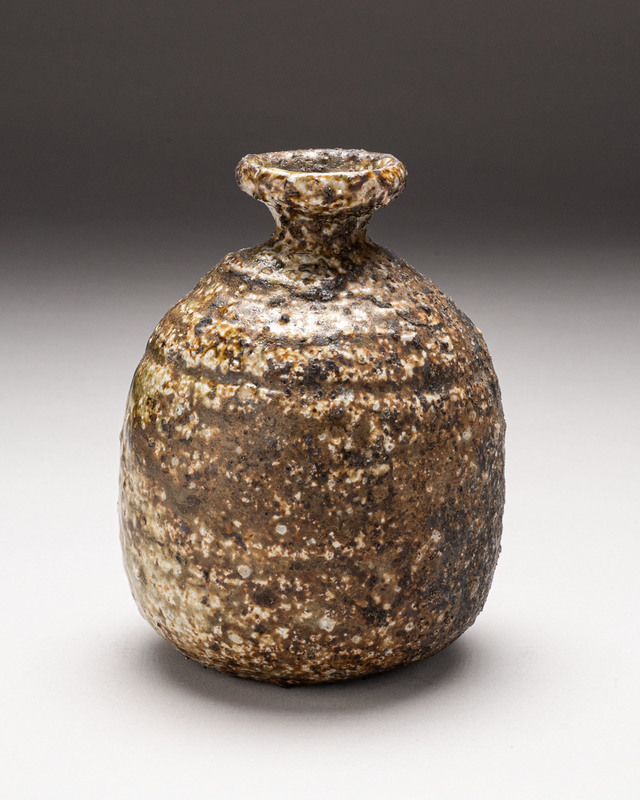Sake Bottle
Item
Title
Sake Bottle
Creator
Seimei TSUJI
Japanese, 1927–2008
Japanese, 1927–2008
Date
1967
Materials
Shigaraki stoneware
Measurements
5-1/4 x 3-7/8 in. (13.3 x 9.9 cm)
Description
Seimei Tsuji‘s father was an antique collector, and it is said that Tsuji could tell a good antique from a bad one at the age of 5. Tsuji started working on a hand-turned potter’s wheel, called a te-rokuro, when he was 10 years old. At 13 he founded the Tsuji Ceramic Research Institute in Setagaya. He sought advice on his work from masters of Japanese ceramics, including Shōji Hamada, whose work is displayed to the left.
Although Tsuji lived and worked in Tokyo, he followed the traditional, rustic Shigaraki pottery style, named for a small town in Shiga Prefecture. Clay from the hills near this town has a warm orangey tone. The square dish in the case to the left and some of the tea ceremony vessels in the exhibition are examples of shigaraki ware. Tsuji called Shigaraki pots the "purest form" of Japanese pottery, and attempted to bring its qualities to his own practice. He used a te-rokuro his entire life. Tsuji said that when he was handling clay on a te-rokuro he was "listening" to the voice of the clay.
Although Tsuji lived and worked in Tokyo, he followed the traditional, rustic Shigaraki pottery style, named for a small town in Shiga Prefecture. Clay from the hills near this town has a warm orangey tone. The square dish in the case to the left and some of the tea ceremony vessels in the exhibition are examples of shigaraki ware. Tsuji called Shigaraki pots the "purest form" of Japanese pottery, and attempted to bring its qualities to his own practice. He used a te-rokuro his entire life. Tsuji said that when he was handling clay on a te-rokuro he was "listening" to the voice of the clay.
Source
Palmer Museum of Art, The Pennsylvania State University.
Identifier
86.333
Rights
This image is posted publicly for non-profit educational uses, excluding printed publication. Other uses are not permitted.

